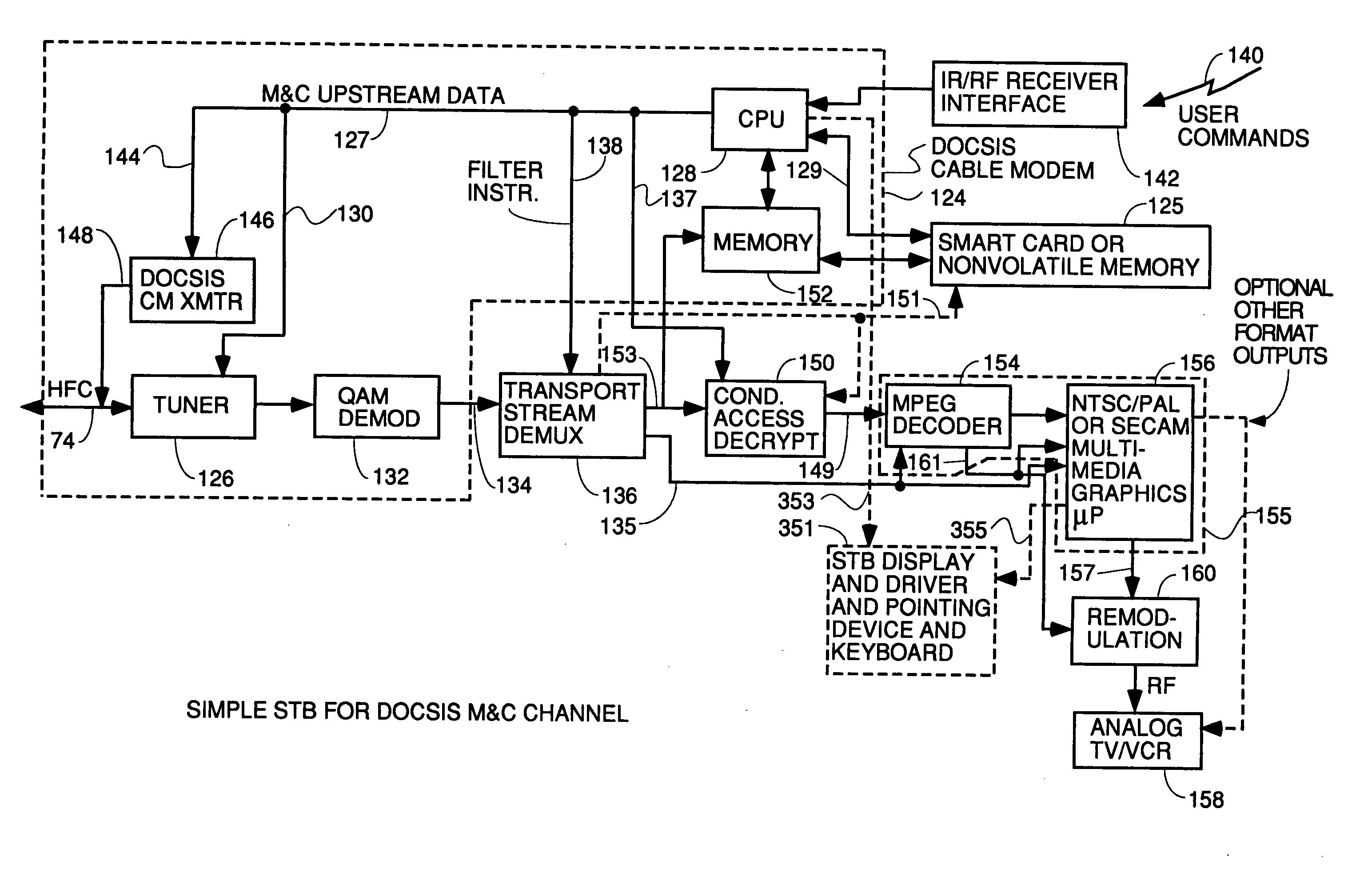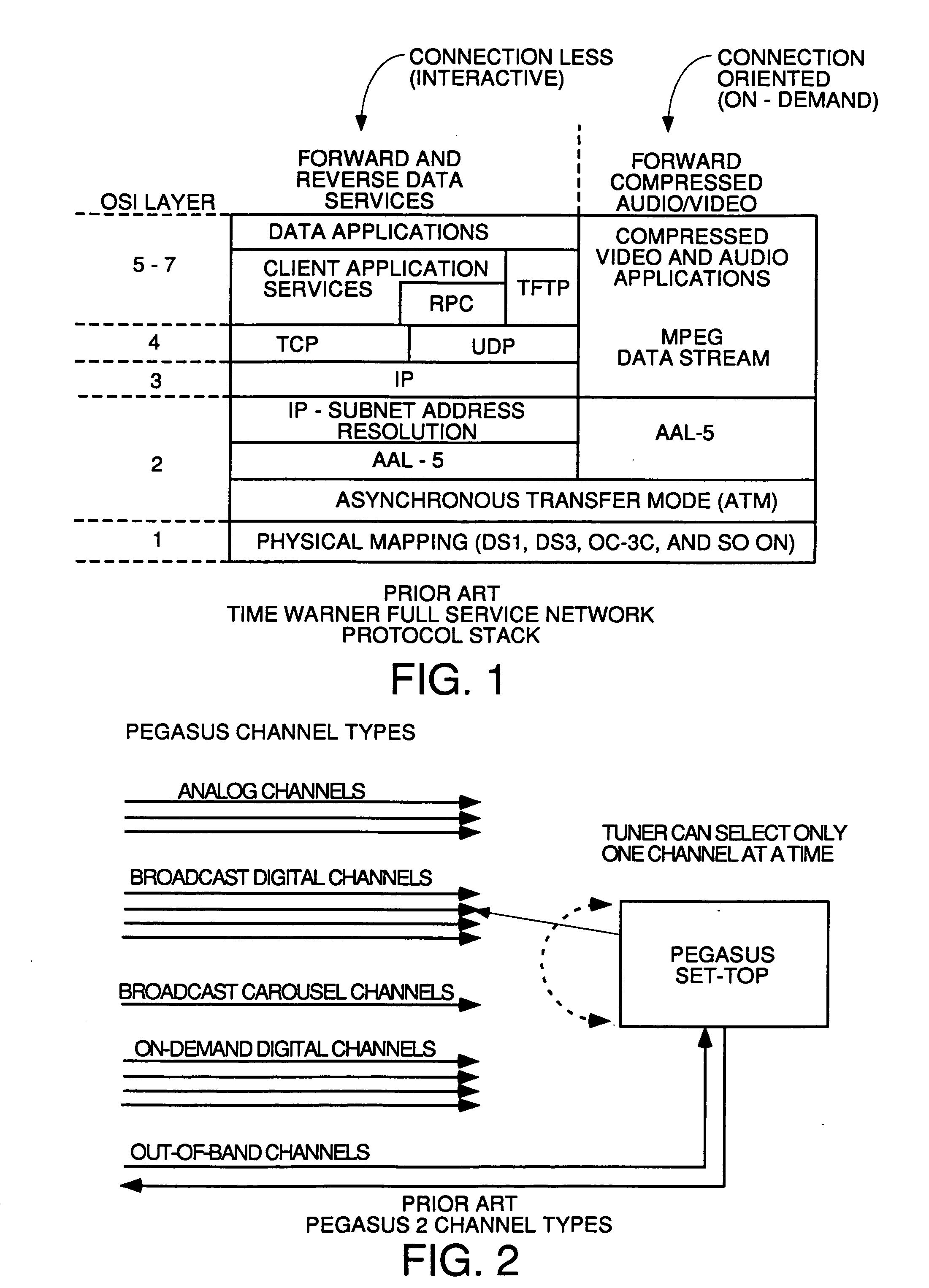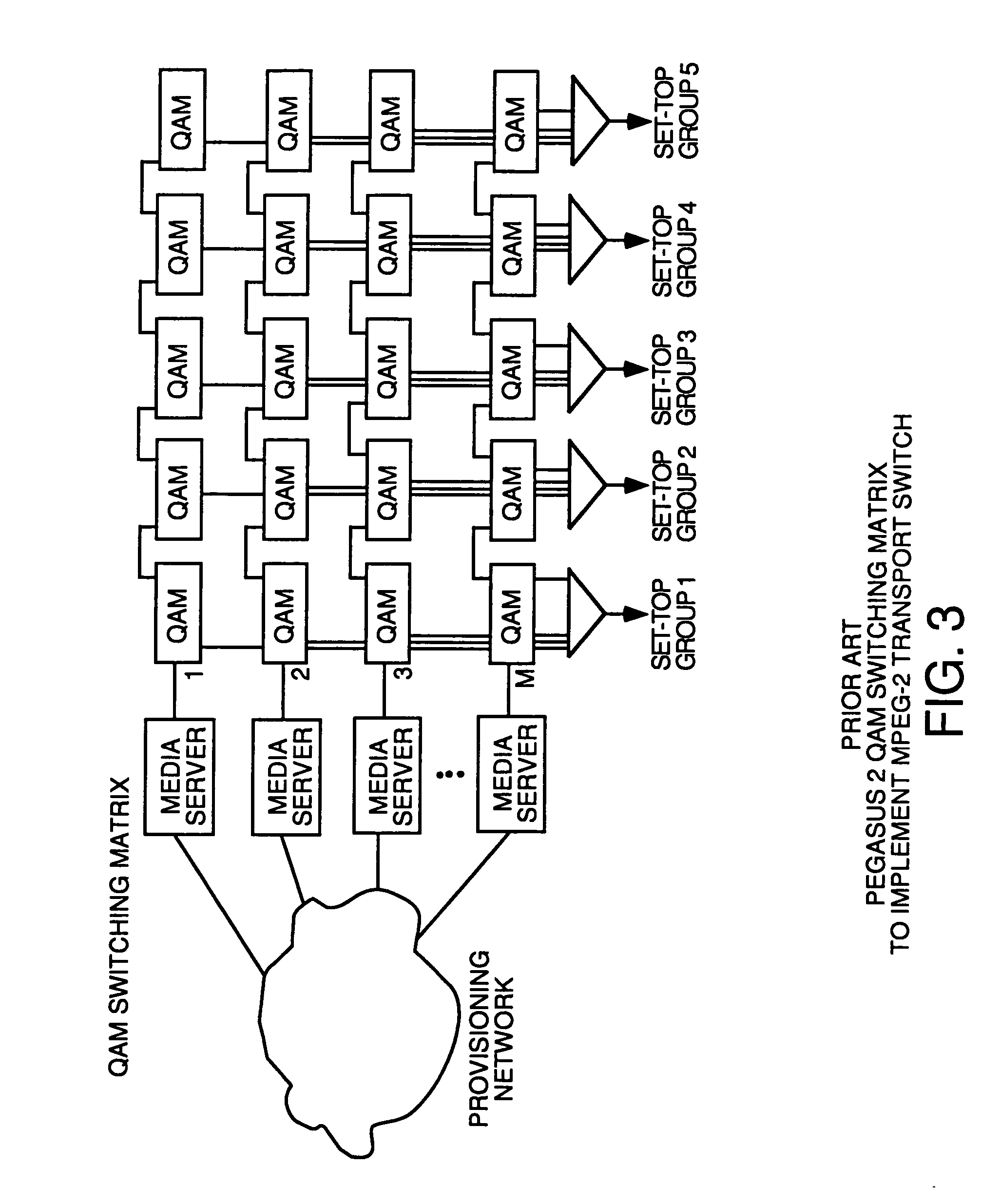Thin DOCSIS in-band management for interactive HFC service delivery
a technology of in-band management and interactive hfc, applied in the direction of selective content distribution, two-way working system, television system, etc., can solve the problems of fsn and pegasus prior art, software download increase, delay in the availability of bandwidth,
- Summary
- Abstract
- Description
- Claims
- Application Information
AI Technical Summary
Benefits of technology
Problems solved by technology
Method used
Image
Examples
Embodiment Construction
[0089] To understand the invention, some background on the DOCSIS data over cable technology and MPEG transport streams is useful. The publication Orzessek & Sommer, "ATM & MPEG-2: Integrating Digital Video Into Broadband Networks", ISBN 0-13-243700-7 (Prentice Hall, 1998) is hereby incorporated by reference for its teachings of the details of MPEG.
[0090] DOCSIS is a series of specifications developed by Cable Labs, which is a consortium of cable system operators defining standards for transmitting data over HFC systems from a headend to a plurality of cable modems. DOCSIS is a set of standards that define the requirements of, inter alia, a physical media dependent layer, a transmission convergence layer and a media access control layer (protocols for messaging to accomplish access control to the media and management of the cable modems) in order to send data, video and audio digitally in compressed form bidirectionally over hybrid fiber coaxial cable CATV systems between a headend ...
PUM
 Login to View More
Login to View More Abstract
Description
Claims
Application Information
 Login to View More
Login to View More - R&D
- Intellectual Property
- Life Sciences
- Materials
- Tech Scout
- Unparalleled Data Quality
- Higher Quality Content
- 60% Fewer Hallucinations
Browse by: Latest US Patents, China's latest patents, Technical Efficacy Thesaurus, Application Domain, Technology Topic, Popular Technical Reports.
© 2025 PatSnap. All rights reserved.Legal|Privacy policy|Modern Slavery Act Transparency Statement|Sitemap|About US| Contact US: help@patsnap.com



